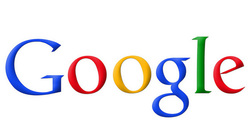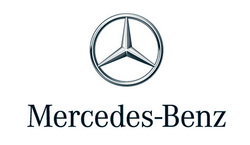|
A name can be described as "a word or set of words by which a person or an object is known, addressed, or referred to". However, it is so much more than just that. A name gives associations, meaning and flavour to a person, an object or a brand. It reminds of experiences and it will quickly give you certain emotions and connotations such as a good, bad or neutral gut feeling. So what’ is in a name? Actually, a lot, much more than you can imagine. Choosing a name for your company carefully is therefore one of the most important decisions you will make, especially for a start-up. Choosing a name can be a tricky thing if you don't know the relevant techniques. When you know the methods of developing a brand name it will be much easier for you to pick the right name for your company, one that makes you stand out from the crowd. To inspire you, let's explore some popular name techniques and examples of how world famous brands got their names. 1. Descriptive: A name that says what the company/brand does. Usually the company uses two different words to create one brand name.  China Mobile is a Chinese state owned telecommunications company that provides nationwide telecoms services. Other examples: Hoover, General Electric and Whole Foods. 2. Coined/Invented: Playful or poetically constructed names that are based on rhythm and the experience of saying them. It sounds like a word but have no dictionary meaning.  Google The name Google is a play on the word “googol” which is a mathematical term for the number represented by the numeral 1 followed by 100 zeros. This reflects the founders, Larry Page and Sergey Brins, mission to organize infinite amount of information on the web. Other examples: Yahoo, Bing and Accenture 3. Acronym: An abbreviation formed from the initial letters of other words and pronounced as a word.  IKEA is inspired by the founder’s initials “ Ingvar Kamprad”, the first letter of his family farm “Elmtaryd” and his birthplace “Agunnaryd”. Other examples: IBM, BMW and SAP 4. Evocative: Evocative brand names say nothing about what you do. Instead they evoke the positioning of a company or product through an unexpected, yet relevant hint or perception.  Victoria’s Secret. The company was founded by Roy Raymond based on the insight hat most men felt embarrassed when buying lingerie for their women. He set up a shop in Palo Alto in 1977 where men were suppose to feel comfortable in an American vision of an English boudoir. The brand was called Victoria’s Secret after Queen Victoria, who was the regent during a very repressed era in time. The name suggested a veil of respectability pulled over “secrets” hidden underneath. However, in marketing only to men, Raymond forgot that most of a women’s underwear is purchased by the women themselves. A new owner took over and in the 1990s the marketing and stores changed to have more appeal for women, leading to today’s success. Other examples: Virgin Airlines, Innocent Smoothies and Tropicana 5. Founders name/merged: Simply a name that consists of the founders names.  Mercedes-Benz. Karl Benz was a German innovator and founder of the motor company Benz & Cie in 1883. Benz largest rival was Daimler, another German motor company, founded by Gottlieb Daimler. One of Daimler’s business partners was Austrian investor Emil Jellinek who had a passion for motor sport. Jellinek was promoting, selling and racing in Daimler cars under the pseudonym “Mercedes”. Mercedes was the Spanish name of his young daughter, meaning, “grace”. Jellinek's racing success in the important Nice Week in 1901 led to an agreement with Daimler that gave name to a new innovative engine called Daimler-Mercedes. In 1926, Benz and Daimler merged and formed a new company called Daimler-Benz AG where a joint trademark was created - the famous three-pointed star – which still adorns Mercedes-Benz vehicles. Other examples: Adidas, Johnson & Johnson and Ericsson. 6) Real words: Names that are re-purposed words and work through a metaphor or indirect association. Such names cannot be generically descriptive as they wouldn’t be protectable trademarks. Can be difficult and expensive to trademark.  Apple: The name came from a driving conversation between the founders, Steve Jobs and Steve Wozniak. Steve Jobs was coming back from a visit to an “apple orchard” and suggested a name for their company – Apple Computer. They both tried to come up with technical-sounding names that were better, but couldn’t think of any good ones. Apple was so much better and that became the brand. Other examples: Orange, Fox and Amazon. 7) Compound: A name that is a hybrid, formed from two existing words, often with the first word receiving the main emphasis in pronunciation. An easy way to create new words with limitless number of possible combinations.  YouTube: The history of YouTube began in 2005 when the founders activated the Internet domain name "YouTube.com" and started to create a video-sharing website on which users could upload, share, and view videos. Other examples: Band Aid, LinkedIn, Face Book and Firefox. Naming process
With the above naming techniques in mind you can now start to create a name for your company. At Lavandel, we recommend using the following process: 1) Start by writing a brief with criteria’s and considerations for the new name. Use your vision, brand strategy and the market your company is operating within. 2) Conduct a creative name brainstorming consisting of key people who thoroughly understand your brand and vision. If you have a brand platform already, use it as a starting point as it should be aligned with the new name. 3) Define themes that are appropriate for your brand, based on your brand values and brand essence. Explore the different types and techniques of names (common are descriptive, evocative, coined/invented, compounds, associations, experiential, acronyms and merged/ founders name). All of those types can be included in your brainstorming as long as it supports your brand objectives. 4) Evaluate the names. To find a winning name you need to ask yourself the following questions: · Is it distinctive and unique? Connected to your brand essence? Does it differentiate you from other companies in the market? · Is it memorable? · Does it inspire your target audience? Is it simple and clear with positive connotations? · Is it easy to spell and pronounce? How does it sound? Is it short and concise? · Does it give appropriate associations? Does it mean something else in another language? Is it culturally neutral in a global context? · Does it have legs and longevity? Can it grow with your brand and be used for sub-brands? · Can it be protected? 5) Choose a name that can tell a story behind your company. The story can expand over time and enable your brand to stand out in the crowd. 6) When you have decided for a name it is necessary to trademark it in all current or future markets where you will operate. You also need to consider all digital channels where you need to own your name. 7) Time to launch and implement your new name across all channels. Be sure to have a plan for managing your brand long-term as this will be one of your key investments for future success. Image sources: Apple, Mercedes-Benz, Victoria's Sectret, IKEA, China Mobile, YouTube "People don't have 30 seconds to be interrupted, but they always have 30 minutes to hear a great story” Humans have been telling stories for thousands of years. Storytelling is about sharing and interpreting experiences through words and images. It is an ancient art and has been used in every culture around the world as a means of entertainment and education as well as instilling cultural and moral values. Ancient cultures painted symbols from stories on cave walls to help the storyteller to remember the story; others used music and dance for expression. With the advent of writing, stories were recorded and shared over wide regions of the world.  Oral stories continue to be committed to memory and passed from generation to generation. We only have to go back to our childhood to understand the powerful effect of storytelling. Think about that favourite story that you wanted to hear over and over again. Oral stories continue to be committed to memory and passed from generation to generation. We only have to go back to our childhood to understand the powerful effect that storytelling has on our heart and minds. Think about that favourite story that you wanted to hear over and over again. Human-to-human connections are the heart and soul of any business. Storytelling is an old concept and a powerful technique for building emotional relationships. In today’s overwhelming information society, the art of story telling has never been more important. People are tired of being talked to, they want to be engaged and valued. Contemporary storytelling is encouraged by new forms of media that design inventive ways for people to record, express and consume stories. Interactive storytelling through games and other digital platforms is growing significantly. This trend echoes a deeply rooted need for all humans to be entertained. When we are listening to a captivating story, the response patterns in our brains become markedly similar to those of the storyteller – it can also be expressed as “getting on the same wave length”. In branding, the story-telling aspect is strong. A terrific brand story can build an emotional connection with your customers, drive desired action, enforce people to change behaviour and last but not least, increase your revenue. Compelling stories have the power to engage every audience - your customers, your employees and your investors. Storytelling can enable your brand to stand out of the crowd and capture your audience’s attention. You don't have to be a large, successful company to tell a terrific story. Inspirational stories can empower modest ventures with tremendous impact. How to create an inspirational brand story · Listen to your customers; genuinely understand them and the role your brand play in their life. · Build a personal story with a compelling narrative. · Use conversational, emotional and engaging messages. · Be authentic and honest, utilize your heritage and purpose · Keep the story short and make it memorable. · Tailor your story to fit different mediums. The most successful companies tell their customers compelling stories and the best stories win. Patagonia, Lego, Virgin Atlantic, TOMS Shoes, Innocent, Ferrari and Missoni are some examples of international brands with engaging and genuine brand stories that facilitate exceptional customer loyalty and brand engagement. What is their secret? They are deeply emotional brands with passionate founders, a captivating heritage, strong values and a clear purpose that has provided an excellent foundation for their story telling. As the kingpin of marketing, Seth Godin puts it, “Living and breathing an authentic story is the best way to survive in a conversation-rich world” So what is your brand story? |
AuthorRosie Kropp, Categories
All
Archives
March 2015
|








 RSS Feed
RSS Feed